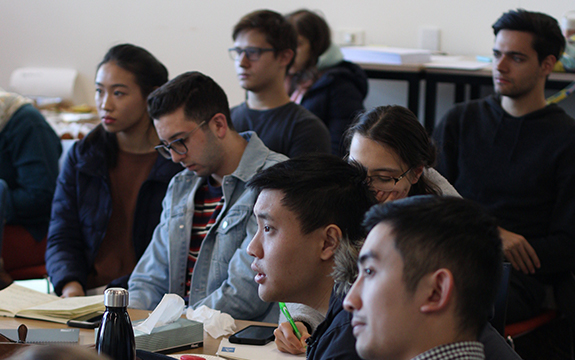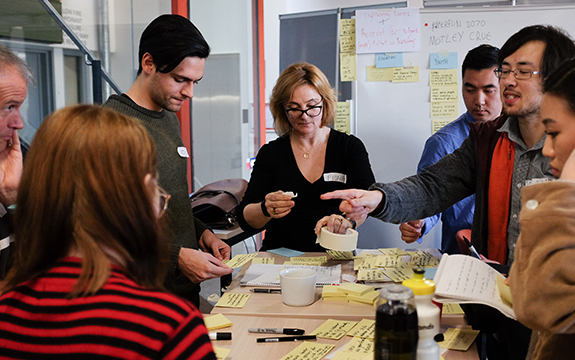Design sprint teaches students to problem solve in five days

In Summary
- Design studio MASS and financial services company Netwealth host design sprint with Swinburne
- Students from different disciplines contributed knowledge and skillsets to their groups
In a five-day Google Ventures ‘design sprint’ at Swinburne, digital design studio MASS and financial services company Netwealth worked with students to find ways to improve the average Australian’s engagement with their superannuation and investments.
Tim Kotsiakos, Director at MASS and Andrew Braun, General Manager (Marketing) at Netwealth, signed a Memorandum of Understanding with Swinburne and hosted the sprint in the Swinburne Innovation Precinct.
“A sprint differs to other problem-solving techniques. It allows many ideas and different voices to be heard. Sometimes the best ideas can come from the most unlikely sources. It also allows you to reframe a design problem into an opportunity by rephrasing it as a, ‘How might we…’ statement” says Tim Kotsiakos, Director at MASS.
 Team Not Nuts categorising and discussing and their ‘How Might We’ cards.
Team Not Nuts categorising and discussing and their ‘How Might We’ cards.
Working in creative teams, final year students from across the university collaborated with business analysts, financial advisers, marketing specialists, design experts and design educators, mapping out solutions to their “How might we…” propositions.
The six groups in the Swinburne sprint developed prototypes, presented them on day four, and tested, evaluated and refined them all on day five with their target groups. The final prototypes were presented to a panel from Netwealth.
 Design sprinters listening to the presentations from industry experts.
Design sprinters listening to the presentations from industry experts.
With ten minutes to present and time afterwards for questions and comments, six groups created six solutions. All prototypes were developed using technology such as digital design platform, Marvel and collaborative interface design tool Figma introduced at the design sprint.
The sprint allowed groups to explore important questions to research and share. Netwealth staff were embedded in the groups and staff from Netwealth and MASS were available every day to facilitate questions.
 Discussing ideas at the sprint.
Discussing ideas at the sprint.
Students from different disciplines contributed knowledge and skillsets to their groups. They developed a schedule of questions to ask their target audience on the final day. Each group was responsible for recruiting people to test their prototypes.
“Testing the prototypes was an aspect that the students enjoyed the most,” says Associate Professor Nicki Wragg, Course Director, Communication Design Honours, Swinburne School of Design.
The sprint taught students a new method or process of design. They learnt collaboration skills and how to effectively work in a group.
“At the start of the sprint, a set of values was outlined for the five days. All input was valued. Any question was considered a good question. Everybody was listened to,” explains Associate Professor Wragg.
“The sprint process gives you the opportunity to try an idea, test and evaluate it quickly with input from the correct demographic. This avoids toiling away individually on a project without input from a client or target audience, only to find that your solution misses the mark.
“It formalises an effective process for working in groups and how to ask questions that are respectful and robust. It teaches how to frame a design problem positively. It allows different dynamics to emerge in a group rather than letting dominant personalities lead."
Read more news on design at Swinburne.

